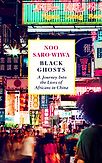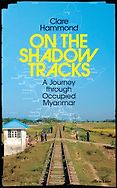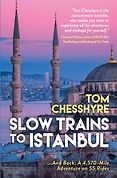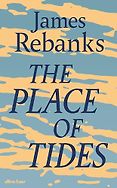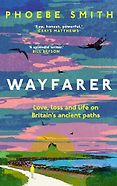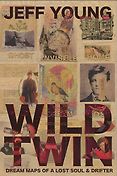Thank you for joining us to discuss the 2025 Edward Stanford Travel Book of the Year, and the five finalists. How did the judging process work?
There were five of us judges. Stanfords put together the shortlist, then we read the six books over a couple of months before coming together to discuss them. Each of us spoke about each book, what we liked, what we didn’t. Then we tried to persuade each other, make the case for the book we thought should win. After that, we used a ranking system, to work out what the consensus was.
Right, let’s talk first about Black Ghosts: A Journey into the Lives of Africans in China by Noo Saro-Wiwa, which you recently declared the 2025 Travel Book of the Year. Can you give us an overview?
This is a striking book in which Saro-Wiwa goes out in search of so-called ‘black ghosts,’ the African economic migrants who live and work in the People’s Republic of China. A lot of these individuals are legitimate traders and professionals, but there’s also an underclass of people living a precarious existence slightly outside of the law because of visa problems and other red tape.
Noo Saro-Wiwa dives into this world. She meets a whole cast of characters, from a cardiac surgeon to a drug dealer, and several ‘visa overstayers,’ as they are called. She tells all of their stories. It’s very informative and entertaining, and Saro-Wiwa is a really diligent guide who is persistent and brave. Sometimes she’s meeting quite shady characters. She’s enjoyably sweary at times, when she gets frustrated. That was something we, as a group, enjoyed, that this book has a very strong, honest guiding voice. So there was solid agreement among us that this should be the winner.
What’s her background, what drew her to stories in China?
She’s a British-Nigerian writer. Several of the people she meets in China are Nigerians, and they have an instant rapport. But the humour feels quite British.
What were you looking for, when you were looking for the ‘travel book of the year’? Did you have set expectations?
I think it was a case of ‘we knew it when we saw it.’ I guess one thing would be that it transports you to a place. Another is a personal quest that feels authentic. Then it’s about the style, the sheer beauty and enjoyment of the words, the quality of the writing itself.
That’s interesting—your point about needing an authentic personal quest. It used to be that travel books were based on whims. Someone would wake up one morning and pack their bags. “Have gone to Patagonia,” that kind of thing. Now I think we are looking for something else, something more emotionally rooted.
That’s true. Although sometimes I still yearn for that kind of book, where someone sets out for the sheer, serendipitous joy of it. The curiosity. On the other hand – and I think this is partly due to the colonial legacy, especially in British travel writing – there’s a greater expectation now to make clear why you are doing it, and why you think you have the right to do it.
Shall we look at the other travel books shortlisted in 2025? Let’s look at Clare Hammond’s On the Shadow Tracks. It has an interesting premise.
Yes. Hammond was a young journalist working in Hong Kong before she moved to Myanmar, where she covered civil conflicts, corruption, and so on. She travelled very widely, and latched onto this original idea of exploring the country via a series of secretive railway lines that she calls ‘the shadow tracks.’ It’s a way of uncovering the country’s history of trauma and mismanagement.
These shadow tracks are railway lines that Than Shwe’s military junta built using forced labour, under laws created by the British colonial system. He was dictator there from 1992 to 2011. So these railways were constructed with all the brutality and suffering that you can imagine, and they don’t really appear on maps.
“It’s about the style, the sheer beauty and enjoyment of the words, the quality of the writing itself”
Clare Hammond discovers the whole network for herself. Some lines are semi-abandoned. So this is, in a way, a classic epic journey, as she covers 3000-miles of journeys into quite remote areas, from the tropical south to the mountain towns on the border with China.
It’s a striking travelogue, but also a gimlet-eyed look at the British colonial legacy. A lot of people might remember reading George Orwell’s Burmese Days on this subject, but there’s also home-grown cruelty. We thought it was an admirably energetic, investigative book with a great breadth of research. And, clearly, a significant contribution to writing about a country little known in the West.
Next on the shortlist we have Tom Chesshyre’s Slow Trains to Istanbul. This sounds great fun.
That’s exactly the way to put it. It’s a travel book of the Old School, really—you know, with the author setting out on a grand expedition, for the reasons we were just talking about, the pleasure and serendipity of it all. Obviously it’s part of this hallowed genre of train journeys will all its accompanying romance.
Chesshyre is an enjoyably exuberant yet self-deprecating traveller. He just plunges in with great gusto. With a friend, he moves from London to Paris, Naples, Nuremberg, the Swiss Alps, Budapest, Athens, and on through Eastern Europe, Romania, Bulgaria, eventually to Istanbul. Then he turns round and comes all the way back.
They are two middle-aged guys who enjoy a drink, and it’s an unpretentious account of their journey with interesting snippets of history and culture. He has a great eye for detail. As Paul Theroux said: “I sought trains, I found passengers.” There are interesting characters in the story. It’s a book for the rail enthusiast who might set out on a similar journey, and perhaps relive their youth in a spirit of adventure.
It’s fascinating how popular railway travel is, as a subgenre of travel writing. I suppose Tom Chesshyre and Monisha Rajesh must be the king and queen of railway writing.
Yes, and Chesshyre can’t help himself, he references the master of that category, Paul Theroux, several times!
Perhaps that brings us to James Rebanks’ new book, The Place of Tides.
I enjoyed this a lot. The author travels to a remote Norwegian archipelago to document the life of a woman called Anna, a mature lady who is upholding an ancient tradition of caring for eider ducks—making little houses for them as nesting sites—so as to gather the down they leave scattered there. It’s in order to make eiderdown quilts.
In a way, it’s an anthropological examination of that way of life, but it’s also a kind of fable. It’s a tribute to the small act of resilience, the heroism of people working in their own communities and landscapes.
That’s obviously something that resonates for Rebanks. A lot of people will know his earlier, quite gritty books, A Shepherd’s Life and English Pastoral. They’re about change and survival in our own rural terrain.
I found this fascinating, and surprising. It was carefully observed and original, and honest in the way he interrogated his own feelings about what he was seeing. It’s not the kind of material that you could look up online and regurgitate—he really went there, witnessed, and recorded.
Right. It has a sort of dreamy elusiveness.
Yes, and I liked that. It didn’t necessarily give a lot of historical background. He keeps it very much in the moment, his own personal experience in that place at that time. Which I thought was nice and fitted the idea of it being a fable.
Shall we talk next about Phoebe Smith’s Wayfarer? The subtitle is ‘Love, Loss and Life on Britain’s Ancient Paths.’ She walks old pilgrimage routes, but it’s also a memoir.
Yes, so this is obviously part of a subgenre that has emerged in recent years, which explores time spent in nature as a balm that allows people to heal after traumatic experiences. It’s an extremely honest and raw self-examination by the writer. Phoebe Smith was already known for her podcast Wander Woman and also for co-founding a charity that helps underprivileged young people embark on carbon negative expeditions.
Anyway, it starts with her being sent on assignment. She’s a travel writer by profession and she is sent to walk the Camino de Santiago in northern Spain, a very famous pilgrimage—probably one of the most famous in the world. During it, she has something like an existential crisis and begins to reexamine her life. She gives up a job, ends a long-term relationship, goes back to Wales, where she’s from, and begins to explore some of Britain’s pilgrim paths.
She explains from the outset that she’s not a religious soul, but she ends up finding these journeys are a way of confronting and processing troubling moments in her life. These are very serious things—toxic relationships, depression, an eating disorder. So it’s an honest and heartfelt exploration of how place and travel can act as a palliative force. That’s a very important and rich and continuing stream of British writing, which in its current form goes back to books like Nature Cure by Richard Mabey, in the early 2000s.
Right. When I discussed hiking memoirs with Gail Simmons, we talked about how long journeys on foot can become useful frames for internal examination. And this book also feels quite similar, thematically, to Oli Smith’s On This Holy Island.
I really enjoyed that.
Shall we talk, finally, about Wild Twin by Jeff Young. It’s a memoir of being a drifter. Why is it on your shortlist of the best travel books of 2025?
Yes, this was one of my strong favourites. It’s really a unique book. It’s about how the author, as a young man in the 1970s, drops out of his life in Liverpool and hitchhikes to Paris in search of a version of himself, which he calls ‘Wild Twin’: a shadow boy or feral drifter. He goes into this strange kind of fugue, rough sleeping, getting lost, living in slummy squats. There’s music and drugs. He lives in the red light district in Amsterdam.
It’s a wonderful, kaleidoscopic, almost hallucinatory book, which really transports you to a place and a moment in time. You can feel it and smell it and see it. But it’s also reaching for the universal themes of literature: the folly and passions and anxiety of youth, and the longing and reflection of older age. The latter part of the book is about him coming home, and his father’s slow decline.
I thought it was terrific. Truly original. It has a great deal of ingenuity in it.
What a varied shortlist. You really have the whole continuum of what it means to travel. From drifters to middle-aged train buffs, from memoir to reportage.
Yes, and I’m sure that several of these writers don’t even think of their books as travel books. But I think that’s rather good. I’m glad that Stanfords is allowing this wide interpretation. Because travel writing does collide with memoir and place writing, these things aren’t mutually exclusive, and that’s why it’s such an exciting field—and becoming more exciting again. It had a heyday in the 1980s and 1990s and now it’s coming back strongly as this hybrid genre.
Interview by Cal Flyn, Deputy Editor
April 11, 2025. Updated: December 12, 2025
Five Books aims to keep its book recommendations and interviews up to date. If you are the interviewee and would like to update your choice of books (or even just what you say about them) please email us at [email protected]
Five Books interviews are expensive to produce. If you've enjoyed this interview, please support us by donating a small amount.

